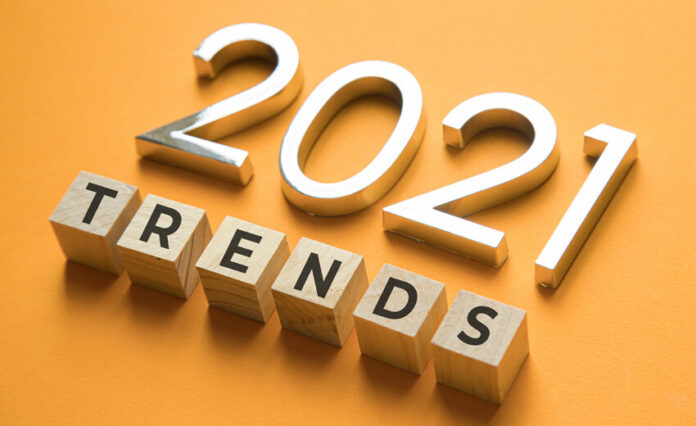By: Prasanth Aby Thomas
Date: 2021/01/04
Published on Asmag.com
As 2021 begins, customers and enthusiasts avidly look forward to the latest technology trends in the security industry. Recent developments have shown that 2021 technology trends will depend significantly on the advancements in intelligent video surveillance, analytics, and cloud storage. Trend predictions from certain manufacturers also indicate this.
There is also an increased awareness of the need for video surveillance systems, which has led to more regulations on the use of cameras. However, there are more privacy concerns as well, as artificial intelligence-based video surveillance systems appear more invasive.
Considering all this and the fact that we are still reeling under the pressure of COVID-19, here is a list of top trends in video surveillance technology that experts expect to see.
Trend 1: AI video analytics leveraging deep learning to business intelligence
Artificial intelligence, with its two popular components, machine learning, and deep learning, is already driving innovation by offering improved data and business intelligence. We have seen significant achievements in diversifying metadata, improving accuracy, and increasing the granularity that would enable surveillance systems to ensure better security.
Experts believe that in 2021 we may see wider adoption of Deep Learning technology that would make video surveillance even more accurate while lowering costs. Tom Edlund, CTO of Briefcam, expects Deep Learning, along with Computer Vision, to drive progress in several sectors beyond security, including robotics and medical imaging. When used in video surveillance, Deep Learning could speed up investigations by allowing search and filter based on specific criteria, rule-based alerts based on behavior or particular objects, etc.
Laurent Villeneuve, Product Marketing Manager at Genetec, expects more business intelligence applications from video analytics software in 2021. The pandemic accelerated a trend that was already happening, and we’re seeing more and more non-security related CCTV analytics applications being developed.
“Specifically, we are seeing more useful applications around people counting, and the detection of large gatherings and crowds,” Villeneuve continued. “We expect to see a move towards delivering enterprise-level analytics at scale and making use of the analytics data in applications that drive business value.”
Related article: Security 50 companies elaborate on their 2021 expectations
Trend 2: Beyond “edge” to increase speed and efficiency
Recent years have seen an increased focus on edge-based solutions that reduce processing time and is resource-efficient. But debates on edge vs. Cloud vs. server have continued, as manufacturers seek to take maximum advantage of each platform.
Johan Paulsson, CTO at Axis Communications, believes that in 2021 we would see intelligent solutions deployed across edge, server, and Cloud, terming it a “horizontal” shift. Writing on the company’s blog, Paulsson explained that leveraging the benefits of each platform would help manufacturers offer more scalable and flexible video surveillance solutions. For instance, an edge-based solution can provide instant alerts when detecting a threat, and an operator can verify it through a cloud-based application to respond.

Head of Marketing
Security & Safety Things
Trend 3: Zero or low-contact solutions as COVID-19 fear continues
COVID-19 has prompted the increased use of touchless solutions like facial recognition access control. In video surveillance, the use of solutions such as license plate recognition could become more popular in the coming year as customers look to minimize physical contact risk.
“As touchless solutions continue to be a topic of conversation, AI-enabled cameras can automate many of the processes which previously would’ve needed some access credential,” said Fabio Marti, head of marketing for Security & Safety Things. “For example, license plate recognition for smart parking areas can optimize space usage and streamline overall access. The benefits of detecting complex events in real-time are becoming more vital to overall responsiveness.”
Trend 4: Cloud technology as IoT makes more inroads
Along with the horizontal approach to deploying intelligent solutions mentioned above, experts also anticipate a renewed focus on cloud storage. Though it’s not a new technology to the security industry, video storage in the Cloud is gaining traction in non-security markets.

Member
ONVIF Steering Committee
“All this is driven mainly by growing possibilities in the IoT space,” said Todd Dunning, Member of ONVIF Steering Committee. “Cloud offers various opportunities for businesses of all sizes, and its benefits have only been heightened by the COVID-19 pandemic. Many organizations found themselves reevaluating traditional usage of existing technologies, while also seeking other methods to assist in day-to-day operations – such as remote monitoring of vacant spaces or providing additional coverage where less staff is required.”
Trend 5: Cybersecurity a primary concern for video surveillance
Cybersecurity has always been a concern for IP cameras, but in 2020 this reached a new high. Early this year, the FBI reported it received about 3000-4000 cybersecurity complaints every day after the pandemic began, compared to about 1000 per day before that. Since more and more devices are connected, CCTV hacking is no longer just about the security of surveillance footage.
In 2021, we can expect more customers prioritizing cyber-responsible security vendors who follow the best practices and meet all the required industry standards. These vendors would also have to remain alert about zero-day exploits and roll out patches as soon as vulnerabilities are discovered.
Trend 6: More acceptance for video surveillance along with privacy laws
We see more and more countries and regions enforcing stricter privacy laws that control the use of video surveillance technology. This would prompt businesses to take great care of the captured data, as they increasingly look to video surveillance as a tool that would help them continue operations in a post-pandemic world.
But there is also an increased awareness of the benefits of video surveillance. With cameras and the intelligent data they provide, businesses can reopen and resume operations while ensuring staff and visitors’ safety and security. Video surveillance today can assist in enforcing proper face mask or other protective gear is being worn, as well as maintaining building occupancy and social distancing guidelines.
“With the advent of smart cameras, video surveillance is also proving to be a cost-effective, flexible solution, as many of these video analytic applications can serve dual purposes,” Marti said. “For example, a retail store can use a smart camera to track store occupancy, while also simultaneously run an object detection application – thus ensuring no unattended or suspicious items are left.
Video surveillance tech in 2021: intelligence to dominate
Current technology trends indicate 2021 will see even more extensive use of artificial intelligence in video surveillance. AI video analytics is already helping businesses in security and beyond. With COVID-19, the use of contactless technology has also become more popular.
As the world recovers from the economic crisis, there will be an increased interest in solutions that can save costs and improve efficiency. Intelligent video surveillance technology with analytics and cloud storage is the solution to these needs. Meanwhile, CCTV cybersecurity will continue to remain a significant concern, and vendors would give greater importance to hardening measures.
Source: https://www.asmag.com/showpost/32099.aspx
Summary: This article touches on the increasing prevalence of surveillance technology in 2021 due to the pandemic. People want the least amount of touch surfaces as possible, so license plate recognizing ai could be helpful. The article explains that security concerns are the main drawback to this type of technology, but overall seems to take the stance that the pros outweigh the negatives.




